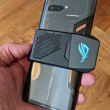Review: Apple iPhone Xs Max
Sep 27, 2018, 9:28 AM by Eric M. Zeman

This fall Apple debuted its biggest-ever iPhone, the Xs Max. This phone boasts a 6.5-inch screen, Apple's A12 Bionic processor, dual rear cameras, wireless charging, a waterproof chassis, and Apple's new iOS 12 platform. Together, these make for a powerful machine that can nearly do it all. Here is Phone Scoop's in-depth review of the Apple iPhone Xs Max.
Hardware
Is It Your Type?
No other phone is as expensive as Apple's new iPhone Xs Max, and none is as polarizing. This heavyweight is for people who want the biggest of the best, accept no compromises, and have money to spend.
Body
The defining feature of the Apple iPhone Xs Max is the huge 6.5-inch display; the biggest ever on an iPhone. This new, gigantic iPhone goes head-to-head with Samsung's Note series and Google's Pixel XL series. All three devices offer cinematic experiences and raw power that put them on a pedestal above most others.
If the Xs Max looks familiar to you, it should: it's a bigger, badder version of the iPhone X. That means it has an identical glass-and-steel design, just more of it. The frame is forged steel and wraps all the way around the outer edge. The stainless steel is colored black to match the space gray model, gold to match the gold model, and simply polished for the silver model. Each shade has its own appeal. The front and rear glass panels are flat save for the subtle curve right where the glass and metal meet. I like the curves of the metal frame, which give the sides a rounded profile that's comfortable against the skin.
The phone is class all the way. It's black-tie ready.
Since the word "max" appears in the name, you should not be surprised to learn that the Xs Max is a large piece of hardware. It's just a bit shorter than the humongous Galaxy Note9, and about the exact same size as the Google Pixel 2 XL. The Xs Max stands 6.2 inches tall and sits 3.05 inches wide. I wish it were a tiny bit narrower (preferably <3 inches), but I can't complain about the 7.6mm thickness. At 7.34 ounces, it's fairly heavy. The iPhone will fit into most guys' pockets, but might strain gals' pockets. The Xs Max is not for small hands unless you buy into the idea of a two-handed device. A case only makes it bigger.
Apple makes some of the highest-quality phones in the world and the iPhone Xs Max serves as yet more evidence backing its status. A few phone makers play in this space. I've seen devices of this quality from Samsung and Huawei this year. Apple did improve the iPhone's water resistance to IP68. That means it can sit in 1.5 meters (~5 feet) of water for up to 30 minutes. I ran it under the faucet and it came through none the worse for wear. Apple claims the glass on either side of the metal frame is the "strongest ever" found on a mobile device. It's still glass, which is in danger of shattering when dropped onto hard surfaces. I'd slap a case on it. (We'll be reviewing some options soon.)
The Xs Max offers a corner-to-corner, full-screen experience (save for the notch). The 6.5-inch display covers nearly the entire front surface of the phone. Only a thin black bezel wraps around the edges between the display and the metal frame. The notch annoyed the bejesus out of me a year ago, but I'm now accustomed to it. Notches are already common on major phones from LG, Huawei, and many others. This notch contains the earpiece speaker, the user-facing camera, and the fancy sensor array that 3D-scans your face for Face ID security.
The ringer silence switch is on the left side and is easy to find and use by feel. The action is excellent. Few phones offer the convenience of a true ringer switch. It's a helpful feature to have, and the physicality is satisfying.
Ringer Switch
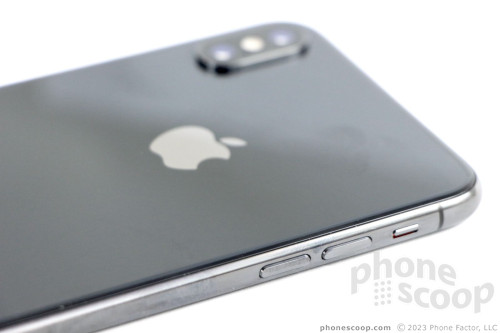
The volume buttons are below the ringer switch. The buttons have good profiles, but travel and feedback is minimal. The screen lock button and SIM card tray are positioned on the right edge of the phone. The screen lock button is a decent size, has a good profile, and offers excellent travel and feedback.
Like all iPhones of the last few years, the Xs Max doesn't include a headphone jack. Moreover, Apple no longer includes an adapter in the box. You have to buy the $9 adapter, use Apple's crummy Lightning-based EarBuds, or use Bluetooth.
Lightning
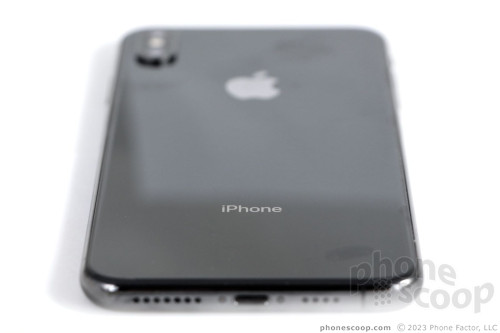
As for charging and syncing, Apple continues to use its proprietary Lightning port, which is centered on the bottom. The company apparently doesn't care that the entire industry has adopted the more-capable USB-C connector. Even Apple has gone all-in on USB-C for its laptop products.
At the very least, Apple could switch to USB-C chargers and include a Lightning-to-USB-C cable with its new phones. That would provide compatibility and some sanity across Apple's product lineup. But no, inexplicably, they've stuck with an outdated, full-size USB connector on the cable and charger. That charger also charges slowly, even though the phone is capable of fast-charging. The competition includes a fast charger in the box; Apple is weirdly behind the competition here on some seriously low-hanging fruit.
The rear panel is flat except for the camera module, which juts out significantly. I wish the module weren't so large, as it makes the phone wobbly when placed on a hard surface. (You can solve the wobble with a case.) You cannot remove the rear panel nor the battery.
Camera Module
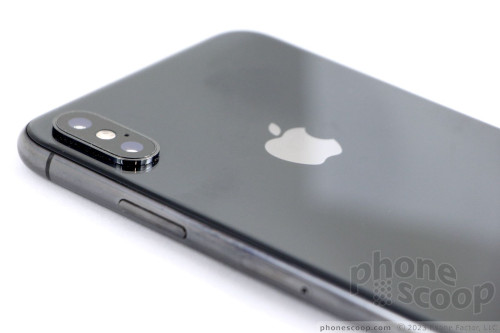
Apple has created a massive slab in the iPhone Xs Max. It meets or beats competing phones in core features, such as screen size, materials, and water resistance. If you want the biggest iPhone available, this is it.
Screen
The iPhone Xs Max has a big screen. It measures 6.5 inches from corner to corner and packs in 2,688 pixels by 1,242 pixels, giving it a pixel density of 458ppi. That's technically shy of the full quad HD+ offered by the competition, but it still offers insane detail.
It's an OLED panel with a 1,000,000:1 contrast ratio, meaning blacks are deep. The screen supports HDR10 and Dolby Vision, and is one of Apple's True Tone displays. All this jargon means the iPhone Xs Max delivers a huge amount of color, and it does so taking into consideration the ambient lighting. This makes it easier on your eyes in a wider range of environments.
Last, it puts out 625 nits of brightness. That's a bit less than the Note9's 710 nit rating, but well more than the Pixel 2 XL's ~438 nit rating. This mostly means the iPhone Xs Max is pretty easy to use outside, which we confirmed on a sunny Saturday.
Watching movies on the Xs Max is truly the best experience I've had with an iPhone. If you subscribe to high-quality services such as Netflix Premium, you can really appreciate what the Xs Max delivers.
The software offers a full array of controls over tint, blue light, and such.
Signal
Apple took the radio modem of the iPhone Xs Max in a different direction. Over the last few years, Apple diversified its supply chain and sourced modems from Qualcomm and Intel. Thanks to a bruising legal battle between Apple and Qualcomm, the iPhone maker used Intel exclusively this year. This means there's a single version of the iPhone Xs Max for the U.S. This is great news for consumers, as any iPhone Xs Max will work on any network in the U.S. (AT&T, Sprint, T-Mobile, and Verizon) so long as the phone is unlocked.
We tested an unlocked iPhone Max on AT&T and Verizon and, unfortunately, were not impressed. The Xs Max has fallen prey to some sort of network-related bug. It connected to AT&T and Verizon just fine, and often indicated solid LTE, but data speeds are not where they should be. The Intel modem supports gigabit LTE with LTE-Advanced features, such as 256QAM and 4x4 MIMO. It should deliver just about the fastest speeds available on any network. It did not. Speeds were often slower than those tested on a year-old iPhone X, and definitely trailed those of the Indycar-quick Note9. The iPhone is fast enough to stream YouTube and Spotify, but you may have to stick with standard def content for now.
Apple's support forums backup our experience, with many owners reporting similar speed problems. Apple has not yet publicly responded to the issue. Hopefully it will, and soon.
Each call I placed through the iPhone Xs Max connected on the first dial, and held on tight over miles of highway driving. No issues there at all.
The Xs Max is the first iPhone to support dual SIM cards. The arrangement isn't traditional. Rather than include a tray that holds two cards, the SIM tray accommodates just one card and Apple built an eSIM into the phone itself. This means you can put your normal SIM card in the tray and then sign up for service with another provider via the eSIM. This functionality is not yet active. Apple will turn it on later this year with a software update.
Sound
The clearest I've ever heard. Period. No phone has provided me with such noise-free calls. Voices come through the earpiece as pure as a nightingale's song. The Xs Max delivers a solid amount of sound, meaning calls are easier to hear than on older iPhones. I was able to enjoy calls just about everywhere I took the Xs Max, including coffee shops, shopping malls, supermarkets, outdoor parks, and speeding cars.
The speakerphone is significantly improved when compared to the iPhone X. It's clearer, punchier, and brighter. The sound cuts through your surroundings enough so that you can nearly always tell what's being said through the speaker. It works well in many spaces, including moving cars.
The ringers and alerts can be set to annoyingly loud volumes, ensuring you never miss a call. Apple's haptic vibrations for alerts and feedback are among the best.
Apple says it improved the stereo sound that comes from the earpiece and bottom-firing speakers. Not only are the two speakers capable of pushing more air, the sound is cleaner and better balanced. Turning the phone on its side to watch videos is a pleasing experience.
Battery
The battery has a capacity of 3,174mAh. That's the biggest we've seen in an iPhone. Apple says it lasts about 1.5 hours longer than the battery of last year's iPhone X. That's about right. Testing saw the phone push through the majority of a day with a comfortable cushion left at bedtime. I will caution that you take care with the background processes, which may sap battery life.
iOS 12 provides lots of ways to manage the battery, but you have to remember to use them. You can control background processes for each individual app, as well as set limits on apps' connectivity. It requires some effort to truly fine-tune it all. Thankfully, the low-power mode lets you quickly shut down select background processes (email sync., etc.) and wireless radios to conserve power.
The Xs Max includes a Battery Health Meter that tells you just how well the battery is performing as far as life expectancy is concerned. Because this phone is brand new, the battery is operating at 100% efficiency and at 100% capacity. As the lithium ion battery loses some capacity over time, you'll be able to switch between better battery life or better performance.
Last, the iPhone Xs Max supports wireless charging based on the Qi standard. It works with most of the wireless chargers being sold in stores today. I tested it on several in my office and found it worked with each. It charged fastest on a 10W wireless charger; much faster than the ridiculous included wired wall plug Apple's refusal to offer rapid wired charging continues to leave me flummoxed. It's not as fast to charge as the Note9, which charges at ludicrous speed, but it's the fastest-charging iPhone I've used.
Bluetooth, GPS, NFC, WiFi
The Xs Max has a Bluetooth 5.0 radio on board. It supports mosts profiles for connecting to headsets, headphones, speakers, other phones/PCs, and cars. It paired easily with a half dozen different devices, including all of the above-mentioned accessories. Apple's AirPods pair with the iPhone instantly thanks to Apple's proprietary technology, but I didn't run into trouble with third-party Bluetooth headphones. Phone calls sound excellent through my car's hands-free system and music sounded very good via speakers and headphones. The Bluetooth works really well.
I have no complaints about the iPhone's GPS radio. I tested both Apple Maps and Google Maps and both delivered very good real-time, point-to-point navigation. The speed and accuracy of both mapping apps was similar, meaning quick and accurate to within about 15 feet. The iPhone makes for a good navigation device.
The iPhone Xs Max has an NFC radio built in. It's primarily meant to facilitate tap-and-go mobile payments through Apple Pay. In this respect, it works perfectly. Setting up Apple Pay is a breeze and I used the Xs Max to make several mobile payments over the last few days. The latest software from Apple has opened up the NFC radio to more functionality, but I have yet to see it interact with NFC tags, or use NFC for pairing with certain headphones.
Similar to the LTE radio, the WiFi radio is sub-par. Though the iPhone Xs Max supports the latest dual-band WiFi tech, speeds over WiFi are just not good enough. The initial setup process for the Xs Max was painful due to how long it took the phone to download apps over WiFi. It should be much faster, and in fact the 2017 iPhone X and other phones are faster. This appears to be related to the same bug impacting the LTE speeds. Again, I hope Apple responds to this issue soon and offers a fix.
Software
Lock Screen
Thanks to iOS 12, Apple has resolved some of my biggest gripes with the iPhone's lock screen. Chiefly, it has re-organized how notifications are delivered and managed. People have even more control over which apps are allowed to reach the lock screen, and what form those notifications take. iOS 12 now allows you to batch delete notifications from the same app, something that wasn't possible before, as well as sort through notifications and respond from the lock screen if you wish. It does take time and effort to set these up, but at least it's now possible.
Other than these changes, not much is different on the lock screen. Double tap the display, or raise the phone to a normal viewing angle, in order to get the lock screen to light up. It shows the clock with your notifications underneath. The screen will stay lit for about 5 seconds. There's no real "ambient display" as on some Android phones, which would consist of the clock and simple notifications remaining visible even with the screen "off".
The clock and date are positioned near the top of the display, while two shortcuts (flashlight and camera) appear in the lower corners. When the lock screen is on, you can swipe over to see the Today View, which is where iOS widgets show up, such as your calendar, news, the weather, and so on.
Face ID is your best bet for securing the iPhone Xs Max. (If you're coming from an iPhone 8 or older, there's no more home button and Touch ID.) Face ID uses the front-facing True Depth camera to map your face in 3D, using thousands of invisible, harmless laser beams. This makes it vastly more secure than simple facial recognition technology on some competing phones that only uses the selfie camera.
Recording your face and setting up Face ID is a breeze to use. It takes about a minute. You'll have to scan your face twice and set a passcode as backup.
Face ID on the iPhone Xs Max is a bit faster than it was on last year's iPhone. That's a good thing. It now unlocks almost instantly when I raise the phone to my face. The iPhone Xs Max requires your physical attention. If the phone is sitting on a table or desk, Face ID generally fails due to the angle; you'll have to enter your passcode to unlock the phone. Face ID does work when wearing hats, scarves, and glasses, but sunglasses still give it trouble.
iOS 12 allows you to set up a second face to unlock the phone. This could be useful to parents or when sharing a device. The process for recording the second face is the same as the first and it works just as quickly. The phone does not support separate user accounts, however, so the second person will gain full access to the primary owner's apps and information.
The latest software from Apple also allows you to expand the use of Face ID for storing and securing passwords. Setting up the Xs Max was a breeze thanks to the way Face ID and the password manager work. I barely had to type any passwords. It was great. Don't forget that your face is also the password for Apple Pay.
As far as facial recognition on a smartphone goes, Face ID on the iPhone Xs Max provides the best overall experience.
Home Screens
If you're coming from an iPhone 8 or older, you'll face a bit of a learning curve to master the swipe-based user interface on the Xs Max.
At any time, swipe up quickly from the bottom edge to go straight to the home screen. A thin bar at the bottom of the screen gives you a visual cue where to start. If you swipe up just a little and drag your thumb left or right, you'll see the app-switcher screen appear with app cards floating in a deck. Drawing an upside-down "U" with your thumb will take you back to the most recently used app. These gestures aren't intuitive, and take time to train properly.
You'll have to learn new patterns to master the lock-screen key. For example, double-press the lock button to activate Apple Pay. Long-press the lock button to open Siri. Press the lock and up-volume buttons quickly to take a screenshot, but press-and-hold these same two buttons to power the phone down. Again, these are not as intuitive as they could or should be. After using an iPhone X for a year I still mess some of these up. It's really easy to accidentally power down the phone when you mean to take a screenshot.
Apps placed on home screen panels still snap up and to the left into a self-arranging grid, as they have since 2007. Four apps are always accessible from the dock at the bottom of the screen. Folders can contain dozens of apps, and you can populate nearly unlimited home screens with apps and folders. Arranging them all on your home screens is as annoying as ever.
Arranging Apps
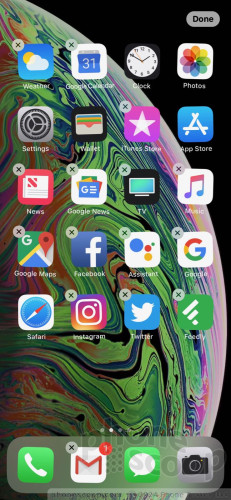
The settings menu is a lengthy affair. What used to be just a few options in iOS 1 and 2 now stretch down the screen seemingly forever. There are endless ways to tweak iOS 12 and I doubt many will bother diving too deep into the settings. If you have something particular in mind, your best bet is to use the settings search bar or ask Siri for help.
Settings
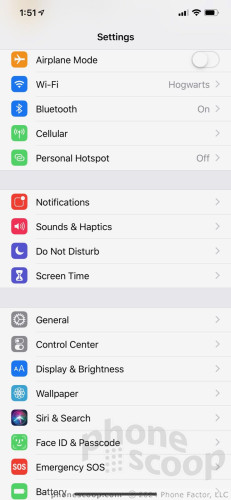
The iPhone Xs Max and iOS 12 don't fix some of my biggest complaints about the iPhone X form factor. For example, the Control Center is accessible only by swiping down from the top-right corner of the screen. It's really awkward. You cannot quickly and easily adjust screen brightness, or radios, or volume from the bottom of the screen. This is made worse by the large screen of the Xs Max; it's a reach. Moreover, the battery indicator in the right "ear" doesn't display the remaining battery percentage. It offers just a visual meter. The exact battery percentage only becomes visible by pulling down the Control Center. Bah.
Control Center

Access the notification shade by swiping down from the notch or the left "ear". From the main home screen, swiping to the right reveals your widgets.
Given the IMAX-sized display of the Xs Max, it's rather absurd that the iPhone and iOS 12 don't support split-screen multitasking. Android phones have long offered this ability. Thankfully, the Xs Max brings back the dual-column features of apps like iMessage and Email. This means when held sideways (landscape) your phone will show you the message list on the left and the message content on the right.
The Xs Max carries over 3D Touch, which means the screen recognizes light touches as distinct from more firm presses. Firm presses made on the home screen apps call up an action menu. In general, the items in these menus let you skip a few steps. Want to move apps around the home screen? You'll have to learn the difference between a simple tap (to open), a quick firm press (for 3D Touch), and the lightweight long-press needed to put the home screen in edit mode. It can be aggravating.
3D Touch

The iPhone Xs Max has Apple's new A12 Bionic processor with a new neural engine and 4 GB of RAM. The A12 is one of the first CPUs to adopt a 7nm process, allowing it to make billions of calculations per second without destroying battery life. The A12 makes short work of heavy-duty games and augmented reality apps without breaking a sweat. The Xs Max is a blisteringly fast phone.
Camera
The quickest way to open the iPhone's camera is to tap the screen and swipe left. I'd much prefer a hardware shortcut, such as a double-press of the lock key. The camera app opens instantly. There's also the lock screen shortcut, which needs a 3D Touch-style firm press to open the app.
The iPhone camera app itself is more or less a direct carry-over from the iPhone X. It offers a handful of basic shooting modes: normal, panorama, portrait, and square for pictures, plus normal, slow-mo, and timelapse for video. All seven of these are accessed by swiping the viewfinder sideways from one mode to the next. It can be bothersome to swipe your way through all the modes from one end of the chain to the other, though you can press the tiny text of the mode you want to use, if it's visible, and jump to it.
Several other controls are always accessible from the viewfinder, including filters, the timer, Live Photos, and the flash (which can be toggled between on/off/auto). HDR is on by default and if you want to turn it off you'll need to dive into the settings.
You can quickly jump from the main lens to the telephoto lens by pressing the "1x" button. This automatically zooms to 2x magnification via the secondary lens. If you use the old pinch-to-zoom method, Apple's software seamlessly switches from one camera to the other when you pass the 2x point.
The portrait / bokeh shooting mode is worth talking about for a moment. Portrait mode makes use of both rear cameras to enhance pictures of people by blurring the background so the subject stands out. The lighting effects allow you to easily switch between five different scenes, including natural, contour, studio, stage, and stage mono. Each produces slightly different results. For example, "natural" gives you a soft look with warm skin tones, while the stage and stage mono options highlight just the subject's face and do away with the background almost entirely. These modes are fun to futz with, and are also available via the front-facing camera. New this year is the ability to adjust the level of blur after the fact in the Photos app. It's simple to put to work when editing portraits.
Less Blur

More Blur

The camera on the iPhone Xs Max is the most advanced Apple has ever offered due in large part to behind-the-scenes algorithms and scene detection. The good news is that, thanks to the A12 bionic processor, the camera never feels sluggish.
Photos/Video
The camera system relies on two 12-megapixel sensors, one with a wide-angle lens at f/1.8 and one with a telephoto lens (2x optical zoom) at f/2.4. Both include six-element lenses with sapphire covers, and optical image stabilization. The list of features automatically handled by the A12 Bionic and its image signal processor are too many to list.
The Xs Max takes excellent photos, the best-ever from an iPhone. There's no doubt the A12 and its new algorithms help produce more well-rounded images with better depth, exposure, and color. I think Apple's processing still skews a little too warm, but that's just me.
What impressed me most was the new iPhone's ability to focus (more) quickly in dark environments and snap the shot. Older iPhones are notoriously slow to focus in low light. The Xs Max speeds are definitely improved, along with the resulting photos. You can see this in the subway shot below. The amount of detail visible low along the tracks is great considering how dark it was. Despite this near-black area, the lighted platform isn't over-exposed. This seems to be Apple's updated Smart HDR tech at work, which merges the data from even more exposures to get the right balance.
The Pixel 2 XL and Note9 are each just a little bit better than the Xs Max, but not by much, and certainly not enough to bother changing platforms.
The selfie camera has a 7-megapixel sensor at f/2.2. As noted earlier, it can handle portrait / bokeh photography without the help from a second lens. It includes Smart HDR, wide color gamut, and Apple's screen-based Retina Flash.
The self-portraits I took were quite true-to-life. They might produce more facial detail than a Gen Xer might care to display all over the internet. The images were very sharp and showed proper color. They leaned a little toward under-exposure, if you ask me. The flash can help with that.
You can use the True Depth selfie camera to capture fun, cartoon-like Animoji and Memoji's. (The Memojis are creepy AF!) Memoji's can be shared via most social and messaging apps.
Bottom line: Instagram aficionados and rising social media stars are going to want the Xs Max in order to look their very best for fans and followers.
Last, but not least: video. The iPhone Xs Max captures video at a wide array of resolutions and frame rates, up to 4K at 60fps for smooth Ultra HD footage. I am glad that Apple finally doubled the frame rate of slow-motion capture. The Xs Max can record slow-mo at 240fps, which slows things down by half when compared to the iPhone X. (The Sony Xperia XZ3 and Galaxy Note9 can record slow-mo at an astonishing 960fps.) Other video camera features include stabilization, cinema smoothing with 24fps capture, continuous autofocus, geotagging, and, for the first time on an iPhone, stereo sound recording. Competing devices have offered stereo sound capture for years.
Accuracy is what I typically want most in video, and that's what the iPhone Xs Max delivers. The video I shot looked exactly like the real-world environment. It was sharp, properly exposed, and demonstrated the right color balance. I like that you can use the telephoto lens for optical zoom and still capture 4K video.
The Xs Max is all the camera most people will ever need.
Wrap-Up
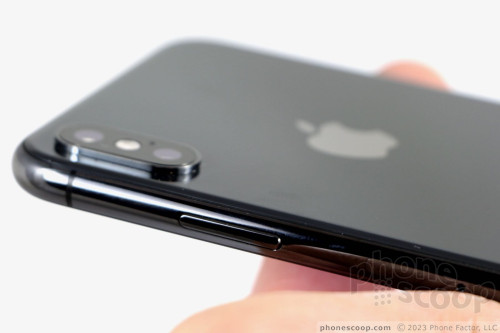
The iPhone Xs Max is maximum Apple. It's the sum of every design and engineering decision Apple has made up to this point. This iPhone is a very competitive phone in the ferocious mobile market that will appeal to those who want it all.
The design and quality of the phone are class-setting, the display is eye-popping, and the table-stakes features, such as IP68 water resistance and wireless charging, are present and accounted for. Battery life is fine, but can always better. Data performance left a bitter taste in my mouth, but phone calls were music to my ears. Speaking of music, the new and improved stereo speakers mean you won't have to cart a Bluetooth speaker in order to enjoy music at home or in the office.
iOS 12 from Apple is a fine compliment to this new hardware. We didn't touch on the bulk of iOS 12's new capabilities in this review, but suffice it to say that the new OS is really smooth. It offers a well-rounded set of features that should please regular Joe's and mobile pros alike.
Apple's camera app isn't the absolute best, but it gets the job done. More importantly, Apple's mathematical wizardry in the A12 Bionic neural engine demonstrate how impressive computational photography can be. The camera results impress.
The biggest drawback? That price tag. Holy cow this phone is expensive. The 64 GB model costs $1,099, the 256 GB model costs $1,249, and the 512 GB model costs a sobering $1,449, as much as a decent laptop. Don't max out your credit card, buy the Xs Max through a monthly installment plan if you can. You might want to opt for the insurance.
The Xs Max is a solid contender against class leaders the Note9 and Pixel 2 XL. If you're using an older iPhone Plus, the Xs Max is the no-brainer, wallet-drainer upgrade you've been waiting for.
Comments
Shocking price?












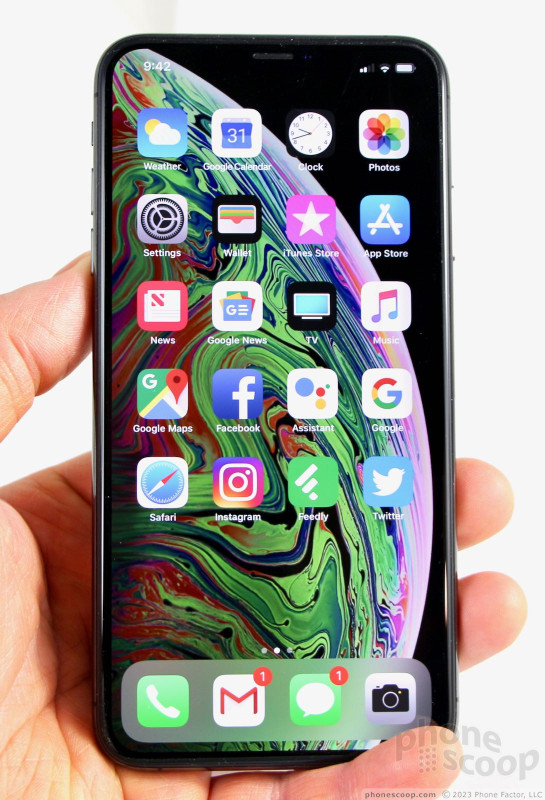























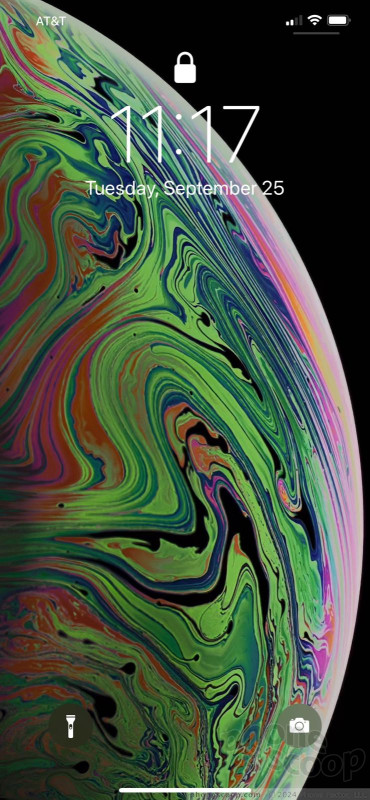





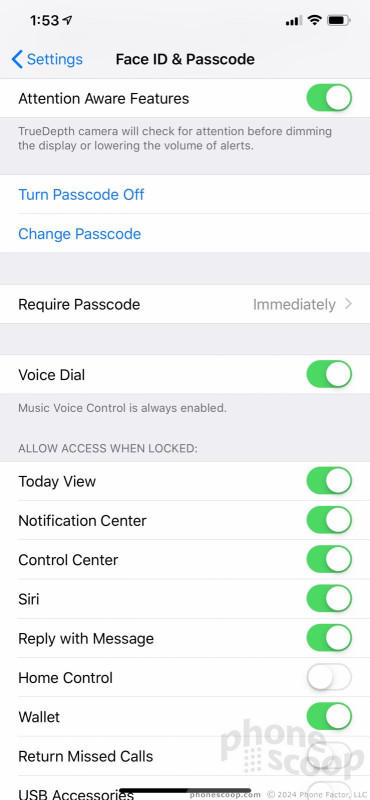



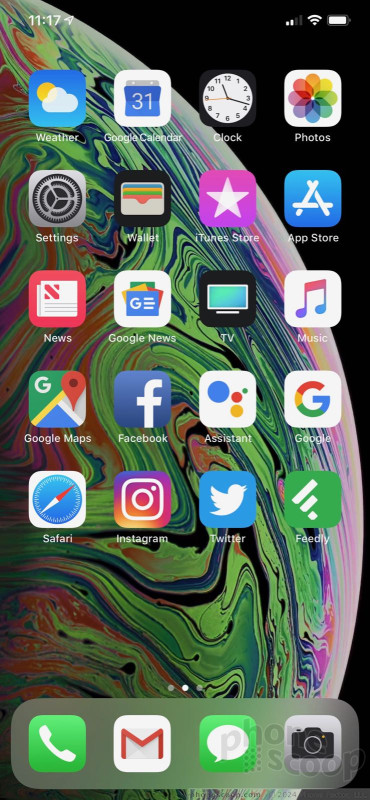







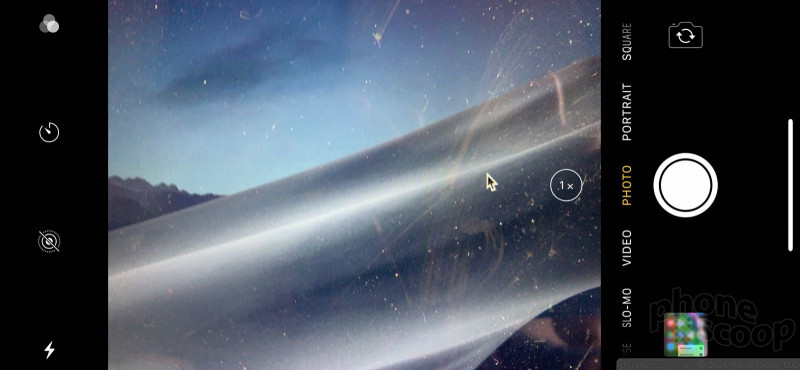
































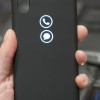 Iconcase Adds Notification Lights to Your iPhone
Iconcase Adds Notification Lights to Your iPhone
 Review: UAG Cases for iPhone Xs Max
Review: UAG Cases for iPhone Xs Max
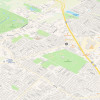 Apple Completes Maps Revamp in US
Apple Completes Maps Revamp in US
 Apple's "Attention Correction" Lets You See Eye-to-Eye in FaceTime
Apple's "Attention Correction" Lets You See Eye-to-Eye in FaceTime
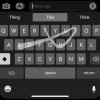 Apple Releases iOS 13 Public Beta
Apple Releases iOS 13 Public Beta
 Apple iPhone Xs Max
Apple iPhone Xs Max


